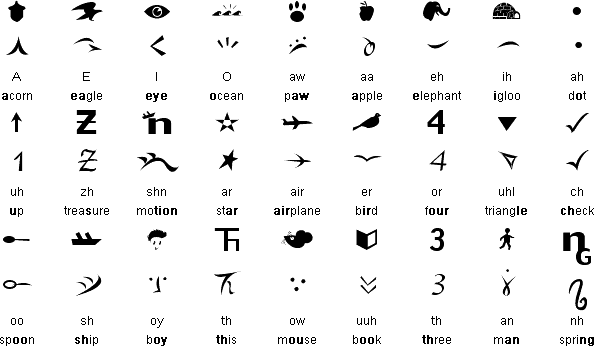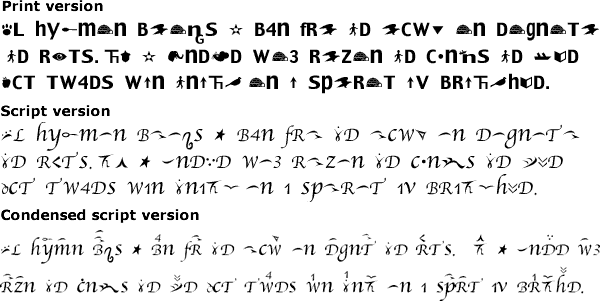Python is a very simple language and is perfect for beginners yet powerful enough that gaming companies like: Activision Blizzard, Firaxis Games use Python for their games.
So what does all this mean? Line 1 is asking for you to type your name that is the "input". After you type your name and press enter the computer will display the following: "Hello (your name)". Now this is a very simple example and as you can see, anyone could write some simple code and start programming.
Here is a (long) short game which can be programmed to play on your computer.
The Dodger game has the player control a small man (which we call the player's character) who must dodge a whole bunch of baddies that fall from the top of the screen. The longer the player can keep dodging the baddies, the higher the score they will get.
import pygame, random, sys
from pygame.locals import *
WINDOWWIDTH = 600
WINDOWHEIGHT = 600
TEXTCOLOR = (255, 255, 255)
BACKGROUNDCOLOR = (0, 0, 0)
FPS = 40
BADDIEMINSIZE = 10
BADDIEMAXSIZE = 40
BADDIEMINSPEED = 1
BADDIEMAXSPEED = 8
ADDNEWBADDIERATE = 6
PLAYERMOVERATE = 5
def terminate():
pygame.quit()
sys.exit()
def waitForPlayerToPressKey():
while True:
for event in pygame.event.get():
if event.type == QUIT:
terminate()
if event.type == KEYDOWN:
if event.key == K_ESCAPE: # pressing escape quits
terminate()
return
def playerHasHitBaddie(playerRect, baddies):
for b in baddies:
if playerRect.colliderect(b['rect']):
return True
return False
def drawText(text, font, surface, x, y):
textobj = font.render(text, 1, TEXTCOLOR)
textrect = textobj.get_rect()
textrect.topleft = (x, y)
surface.blit(textobj, textrect)
# set up pygame, the window, and the mouse cursor
pygame.init()
mainClock = pygame.time.Clock()
windowSurface = pygame.display.set_mode((WINDOWWIDTH, WINDOWHEIGHT))
pygame.display.set_caption('Dodger')
pygame.mouse.set_visible(False)
# set up fonts
font = pygame.font.SysFont(None, 48)
# set up sounds
gameOverSound = pygame.mixer.Sound('gameover.wav')
pygame.mixer.music.load('background.mid')
# set up images
playerImage = pygame.image.load('player.png')
playerRect = playerImage.get_rect()
baddieImage = pygame.image.load('baddie.png')
# show the "Start" screen
drawText('Dodger', font, windowSurface, (WINDOWWIDTH / 3), (WINDOWHEIGHT / 3))
drawText('Press a key to start.', font, windowSurface, (WINDOWWIDTH / 3) - 30, (WINDOWHEIGHT / 3) + 50)
pygame.display.update()
waitForPlayerToPressKey()
topScore = 0
while True:
# set up the start of the game
baddies = []
score = 0
playerRect.topleft = (WINDOWWIDTH / 2, WINDOWHEIGHT - 50)
moveLeft = moveRight = moveUp = moveDown = False
reverseCheat = slowCheat = False
baddieAddCounter = 0
pygame.mixer.music.play(-1, 0.0)
while True: # the game loop runs while the game part is playing
score += 1 # increase score
for event in pygame.event.get():
if event.type == QUIT:
terminate()
if event.type == KEYDOWN:
if event.key == ord('z'):
reverseCheat = True
if event.key == ord('x'):
slowCheat = True
if event.key == K_LEFT or event.key == ord('a'):
moveRight = False
moveLeft = True
if event.key == K_RIGHT or event.key == ord('d'):
moveLeft = False
moveRight = True
if event.key == K_UP or event.key == ord('w'):
moveDown = False
moveUp = True
if event.key == K_DOWN or event.key == ord('s'):
moveUp = False
moveDown = True
if event.type == KEYUP:
if event.key == ord('z'):
reverseCheat = False
score = 0
if event.key == ord('x'):
slowCheat = False
score = 0
if event.key == K_ESCAPE:
terminate()
if event.key == K_LEFT or event.key == ord('a'):
moveLeft = False
if event.key == K_RIGHT or event.key == ord('d'):
moveRight = False
if event.key == K_UP or event.key == ord('w'):
moveUp = False
if event.key == K_DOWN or event.key == ord('s'):
moveDown = False
if event.type == MOUSEMOTION:
# If the mouse moves, move the player where the cursor is.
playerRect.move_ip(event.pos[0] - playerRect.centerx, event.pos[1] - playerRect.centery)
# Add new baddies at the top of the screen, if needed.
if not reverseCheat and not slowCheat:
baddieAddCounter += 1
if baddieAddCounter == ADDNEWBADDIERATE:
baddieAddCounter = 0
baddieSize = random.randint(BADDIEMINSIZE, BADDIEMAXSIZE)
newBaddie = {'rect': pygame.Rect(random.randint(0, WINDOWWIDTH-baddieSize), 0 - baddieSize, baddieSize, baddieSize),
'speed': random.randint(BADDIEMINSPEED, BADDIEMAXSPEED),
'surface':pygame.transform.scale(baddieImage, (baddieSize, baddieSize)),
}
baddies.append(newBaddie)
# Move the player around.
if moveLeft and playerRect.left > 0:
playerRect.move_ip(-1 * PLAYERMOVERATE, 0)
if moveRight and playerRect.right < WINDOWWIDTH:
playerRect.move_ip(PLAYERMOVERATE, 0)
if moveUp and playerRect.top > 0:
playerRect.move_ip(0, -1 * PLAYERMOVERATE)
if moveDown and playerRect.bottom < WINDOWHEIGHT:
playerRect.move_ip(0, PLAYERMOVERATE)
# Move the mouse cursor to match the player.
pygame.mouse.set_pos(playerRect.centerx, playerRect.centery)
# Move the baddies down.
for b in baddies:
if not reverseCheat and not slowCheat:
b['rect'].move_ip(0, b['speed'])
elif reverseCheat:
b['rect'].move_ip(0, -5)
elif slowCheat:
b['rect'].move_ip(0, 1)
# Delete baddies that have fallen past the bottom.
for b in baddies[:]:
if b['rect'].top > WINDOWHEIGHT:
baddies.remove(b)
# Draw the game world on the window.
windowSurface.fill(BACKGROUNDCOLOR)
# Draw the score and top score.
drawText('Score: %s' % (score), font, windowSurface, 10, 0)
drawText('Top Score: %s' % (topScore), font, windowSurface, 10, 40)
# Draw the player's rectangle
windowSurface.blit(playerImage, playerRect)
# Draw each baddie
for b in baddies:
windowSurface.blit(b['surface'], b['rect'])
pygame.display.update()
# Check if any of the baddies have hit the player.
if playerHasHitBaddie(playerRect, baddies):
if score > topScore:
topScore = score # set new top score
break
mainClock.tick(FPS)
# Stop the game and show the "Game Over" screen.
pygame.mixer.music.stop()
gameOverSound.play()
drawText('GAME OVER', font, windowSurface, (WINDOWWIDTH / 3), (WINDOWHEIGHT / 3))
drawText('Press a key to play again.', font, windowSurface, (WINDOWWIDTH / 3) - 80, (WINDOWHEIGHT / 3) + 50)
pygame.display.update()
waitForPlayerToPressKey()
gameOverSound.stop()
While all the code above may seem overwhelming at first, remember there is much to learn before you start coding like this. Programming can be fun and rewarding, so go ahead and give it a try!

